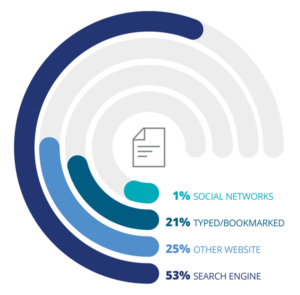SEO (search engine optimization) is a technique used to improve your website’s position in search engines. Basically, it involves targeting paid and unpaid traffic. The key is to improve your ranking in search engines so that you can get as many visitors as possible. There are several different ways to do this, including Backlinks, Page speed, On-page optimization, and Conversion rate optimization.

When it comes to SEO, on-page optimization is one of the most important factors that can boost your ranking. It includes things like titles, headers, images, and more. Using on-page Local SEO techniques can improve your website’s performance and make it more accessible.
One of the most important on-page optimization strategies is to create well-researched and in-depth content. Creating quality content will not only help your site rank better in search engines, but it will also attract links from other websites. Getting links is a great way to increase your site’s authority and brand recognition.
If your content isn’t properly optimized, you won’t have a chance to rank in search engines for key terms. Google’s E-A-T principle, which stands for “expertise, authoritativeness, and trustworthiness,” is a guideline that helps Google assess whether your content is true to its subject.
Other on-page optimization factors include the number of words on the page. If your pages have more than 1,500 words, your chances of getting top-notch rankings for your keywords are higher.
On-page optimization also includes optimizing the load time of your pages. Page speed is a big ranking factor, and it’s especially important for mobile sites.
There are many factors that affect page speed, such as JavaScript files, compression, caching, and more. You can use a tool to determine how your pages perform and how to speed them up, such as Google’s PageSpeed Insights.
Another on-page optimization strategy is to create relevant meta descriptions. Writing relevant, actionable meta descriptions can draw attention to your content and convert visitors into customers. However, keep in mind that a great meta description won’t get you high rankings if it’s uninteresting to the user.
Aside from that, your content should also be well-organized. Make sure it includes keywords and is engaging. Users aren’t going to stick around if they don’t find your content worth reading.
Finally, you can also boost your ranking by using relevant internal linking. This means integrating links from your major pages to other pages on your site. For example, you can link your blog to your homepage.
If you want to maximize your website’s visibility in search engines, you need to build SEO backlinks. Backlinks are important to SEO because they help search bots crawl and rank your site. They also provide a way for web visitors to find your site.
Backlinks are also helpful because they provide references to other useful information. Search engines give a higher ranking to websites with many links from reputable sources. This means that you have better chances of maximizing your page rankings.
You should use a tool to analyze your competitors’ backlinks. You can check whether their sites have broken pages or mentions of your company. Also, see whether they have domain authority. These factors help you determine the quality of your link profile.
To improve your search engine ranking, you can promote your content on social media. Social networks, such as Twitter, can bring you traffic. Moreover, you can build a network of followers. Getting high-quality links from authoritative sources can also increase the amount of traffic to your website.
When you create links, make sure to choose relevant topics. You should also use natural backlink anchors. A good anchor is one that is relevant to your target niche and feels natural to the reader.
While there are several ways to get backlinks, the hardest are those from reputable, authoritative sites. This can be achieved through link-building and promoting your content.
The best way to ensure that your links are relevant is to use a framework called the “Holy Trinity”. It consists of the major metrics of Power, Authority, and Relevance. In general, your link profile should be balanced, with a high proportion of each factor.
Google’s original algorithm was based on the number of backlinks on a website. But it has since evolved. Today, search engine presents web links in order of importance. It presents the most significant links first. That means the least significant links are presented last.
As Google has become more sophisticated in detecting manipulation, it is more likely to penalize sites with link schemes. If you want to avoid this, remove low-quality PBN links and check for expired domains.